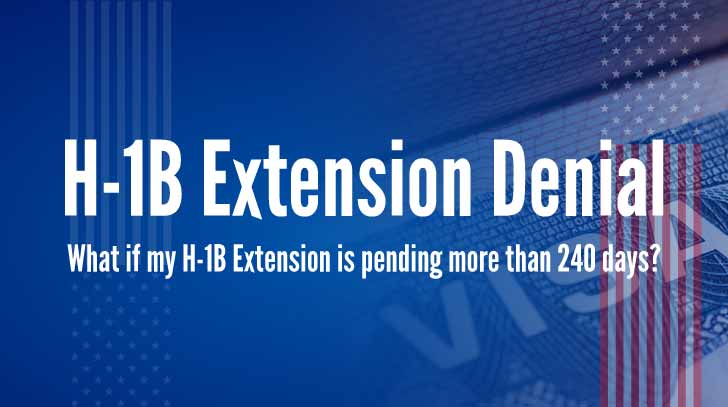What is the 240 day rule in the H-1B extension process?
When an H-1B extension petition is filed with the same employer, the H-1B employee is authorized to work for up to 240 days after the expiration of her current H-1B period of stay (listed on the H-1B employee’s most recent I-94 document). If 240 days pass after the expiration of the H-1B employee’s period of authorized stay and the H-1B extension petition is still pending with USCIS, the H-1B employee loses her authorization to work until the H-1B extension petition is approved. Although the H-1B employee loses her work authorization after the 240 day mark, the H-1B employee is allowed to remain in the US while her timely filed H-1B extension petition is pending with USCIS.
Does the 240 day rule apply to H-1B transfer petitions?
The AC21 statute allows for H-1B portability, which allows an H-1B employee to commence new employment with a new H-1B employer once the new H-1B employer files an H-1B transfer petition, also called H-1B change of employer petition, with USCIS. Employment-based immigration rules state that in order to qualify for H-1B portability, the H-1B employee must meet the following requirements:
- The H-1B worker was lawfully admitted.
- The new H-1B transfer petition is not frivolous.
- The new H-1B transfer petition was filed before expiration of the current H-1B period of stay.
- The H-1B employee was not employed without authorization before the H-1B transfer petition is filed.
The AC21 statute allows an H-1B transfer employee to commence working the moment the H-1B transfer petition is filed. If an H-1B transfer petition is pending beyond the 240 day mark, the H-1B transfer employee should be allowed to continue to work for the new H-1B employer under the rules provided in the AC21 statute.
If you are contemplating filing an H-1B transfer petition or already have an H-1B transfer petition pending with USCIS, contact our employment-based immigration lawyer for a custom-tailored H-1B transfer strategy.
READ ALSO:
Resolving Conflicts Between OPT And H1B
Looking For H1B Sponsoring Employer? Choose Only The Best
What happens if 240 day limit has passed and H-1B extension petition is still pending?
If the H-1B employer filed a timely, non-frivolous request to extend H-1B status, the H-1B employee may remain in the US while USCIS adjudicates the H-1B petition. If the H-1B extension petition is still pending 240 days after expiration of the H-1B employee’s I-94 card, the H-1B employee loses her work authorization but may continue to reside in the US until the H-1B extension petition is adjudicated.
It is possible to request a premium processing service for H-1B petitions, including H-1B extension and H-1B transfer petitions. Petitions filed under premium processing are expedited by USCIS and are processed within 15 days of receipt. Effective October 1, 2018, the government filing fee for the premium processing service is $1,410 (in addition to the standard filing fees). Please note, in recent years, USCIS has routinely suspended premium processing for certain types of H-1B petitions. It is important to discuss the premium processing option with an experienced employment-based immigration lawyer who can advise whether it is a viable option in your particular case.
If an H-1B extension petition has been pending for several months and the H-1B employee must continue working without interruption after the 240 day mark, it is often recommended to upgrade the H-1B petition to premium processing so that the H-1B extension petition is adjudicated before the 240 day deadline.
Source: –https://bit.ly/2VDJcQU
Disclaimer: – https://bit.ly/2S00nLJ
SUBSCRIBE TO OUR LATEST UPDATES
[newsletter_signup_form id=1]

